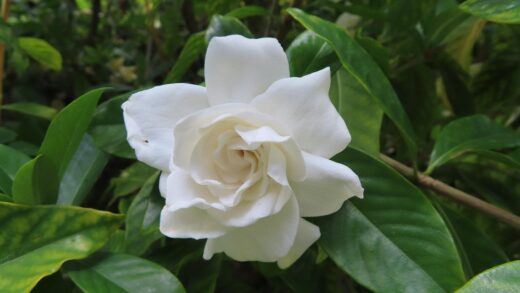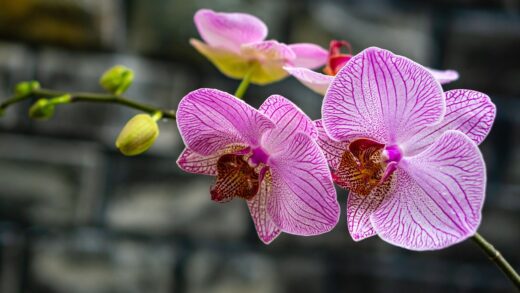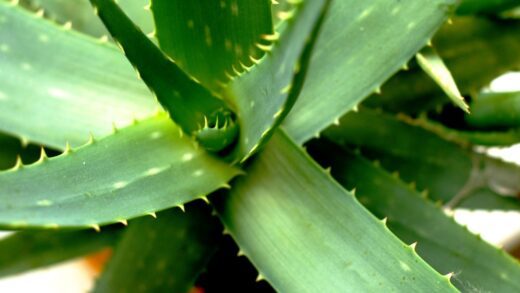Successfully overwintering Caryopteris depends largely on the local climate and the specific hardiness of the chosen cultivar. Most common varieties are reliably hardy in USDA zones 5 through 9, capable of withstanding significant winter cold. In the warmer parts of this range (zones 7-9), bluebeard typically requires no special winter protection at all. It will behave as a deciduous shrub, dropping its leaves in the autumn and surviving the winter with its woody stems intact, ready to leaf out again in the spring. For gardeners in these milder climates, winter care is exceptionally simple and requires minimal intervention.
In the colder end of its hardiness range, such as USDA zones 5 and 6, Caryopteris often behaves more like a sub-shrub or a dieback perennial. This means that the top growth, the woody stems above the ground, may be killed back by freezing temperatures during the winter. While this might seem alarming, it is a normal survival strategy for the plant. The root system remains alive and dormant beneath the soil, well-insulated from the harshest cold. In the spring, new growth will emerge vigorously from the base of the plant, or crown. This dieback habit is why the annual hard pruning is so effective and necessary for this plant in colder regions.
The key to winter survival for Caryopteris is a well-established root system in well-drained soil. Soil that is waterlogged in the winter is far more dangerous to the plant than the cold air temperatures. When saturated soil freezes and thaws repeatedly, it can damage the roots and heave the plant out of the ground. Therefore, ensuring excellent drainage at the time of planting is the single most important step in preparing bluebeard for winter. A healthy plant entering the winter is also more likely to survive, so proper care throughout the growing season contributes to its winter hardiness.
In late autumn, after the first few hard frosts, the plant will have entered dormancy. It is generally recommended to leave the woody stems standing through the winter rather than pruning them back in the fall. These stems can help to trap insulating snow around the base of the plant, which provides excellent natural protection for the crown. They can also offer some minor structural interest in the winter garden. The essential pruning is best left until late winter or early spring, just before new growth begins.
Preparing for the cold season
Preparation for winter begins long before the first frost. The cultural practices throughout the growing season play a significant role in how well a Caryopteris will handle the cold. One of the most important steps is to cease all fertilization by mid-summer. Applying fertilizer late in the season encourages a flush of tender new growth that will not have adequate time to mature and “harden off” before winter arrives. This soft growth is extremely vulnerable to frost damage and can compromise the health of the entire plant.
More articles on this topic
As autumn approaches, you may slightly reduce any supplemental watering for established plants. This helps to signal to the plant that it is time to slow down its growth and begin preparing for dormancy. It is important, however, that the plant does not enter the winter in a state of severe drought stress. In the event of a very dry autumn, provide one or two deep waterings before the ground freezes. A well-hydrated plant is better equipped to withstand the desiccating effects of cold winter winds.
After the ground has been touched by the first few hard frosts but before it freezes solid, applying a layer of organic mulch around the base of the plant is a highly beneficial practice, especially in colder zones or for newly planted shrubs. A 5 to 10-centimeter layer of shredded leaves, wood chips, or straw acts as a blanket, insulating the soil and protecting the plant’s crown and root system from extreme temperature fluctuations. This is particularly important in areas that experience cold temperatures without a reliable blanket of snow cover.
When applying mulch, be careful to keep it from being piled directly against the stems of the plant. Leaving a small, mulch-free circle around the base of the stems helps to prevent moisture from being trapped against the crown, which could lead to rot over the course of a wet winter. The mulch serves to protect the roots, which is the part of the plant that must survive for it to regrow in the spring. This simple step can make a significant difference in the winter survival of Caryopteris at the edge of its hardiness range.
To prune or not to prune in autumn
A common question among gardeners is whether to prune Caryopteris in the autumn or wait until spring. For this particular shrub, the overwhelming consensus among horticultural experts is to wait. Pruning should be delayed until late winter or early spring for several important reasons. Leaving the stems in place over the winter provides a measure of protection for the plant’s crown, which is the vital point from which new growth will emerge.
More articles on this topic
The standing stems, although dormant, act as a natural snow fence. They are effective at trapping falling snow around the base of the plant. A thick layer of snow is one of the best forms of insulation nature can provide, keeping the soil temperature much more stable and protecting the roots from deep freezes and damaging freeze-thaw cycles. Pruning the plant down to the ground in the fall would eliminate this benefit, leaving the crown exposed to the full severity of the winter weather.
Furthermore, pruning in the autumn can, in some cases, stimulate the plant to produce new growth, especially if there is a subsequent warm spell. As mentioned previously, this late-season growth is extremely vulnerable to frost and will be killed by the first hard freeze. This not only wastes the plant’s energy reserves but can also create entry points for disease through the damaged tissue. Waiting until the plant is fully dormant and the coldest part of winter has passed is a much safer practice.
The only pruning that might be considered in the autumn is the removal of any clearly dead, broken, or diseased branches. This is more of a general garden hygiene task than a strategic pruning for plant health. Otherwise, the seed heads and woody structure can be left to provide texture and interest in the winter landscape, offering a perch for small birds and catching the light on frosty mornings. The main structural pruning should be reserved for the period just before spring growth begins.
Winter care for container-grown plants
Caryopteris grown in containers requires a different approach to winter care than plants in the ground. The root system of a potted plant is far more exposed to ambient air temperatures and is not protected by the large, insulating mass of garden soil. In regions where the ground freezes, the soil in a pot can freeze solid, which can be fatal to the plant’s roots. Therefore, additional steps must be taken to protect container-grown specimens.
In zones where winter temperatures regularly drop well below freezing (approximately zone 7 and colder), the best strategy is to move the pot to a sheltered location. An unheated garage, a cold basement, a shed, or an enclosed porch are all suitable options. The goal is not to keep the plant warm and growing, but to keep the roots from experiencing the extreme cold and repeated freeze-thaw cycles. The location should be cool and preferably dark to ensure the plant remains fully dormant.
Throughout the winter, the soil in the pot should be monitored for moisture. A dormant plant uses very little water, but the soil should not be allowed to become completely bone-dry, as this can desiccate and kill the roots. The soil should be checked every few weeks and watered very lightly only when necessary. A small amount of water once a month is often sufficient. Overwatering a dormant plant in a cold location is a sure way to cause the roots to rot.
For gardeners in slightly milder climates (perhaps zone 8), or for those with very large, heavy containers that are difficult to move, other methods can be used. The pot can be wrapped in bubble wrap or burlap for insulation, or it can be placed in a larger container with insulating materials like leaves or straw packed in between. Grouping several containers together in a sheltered spot, such as against a wall of the house, can also help to reduce heat loss and protect the plants from harsh winter winds.
📷Agnieszka Kwiecień, Nova, CC BY-SA 4.0, via Wikimedia Commons


















